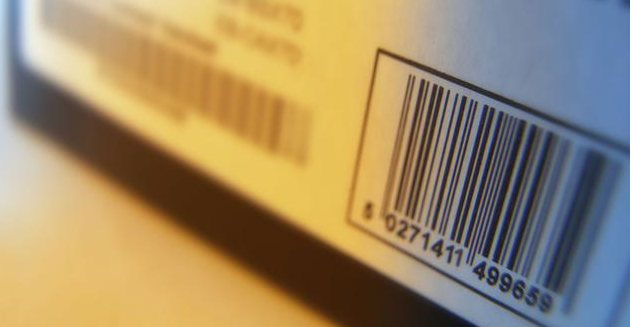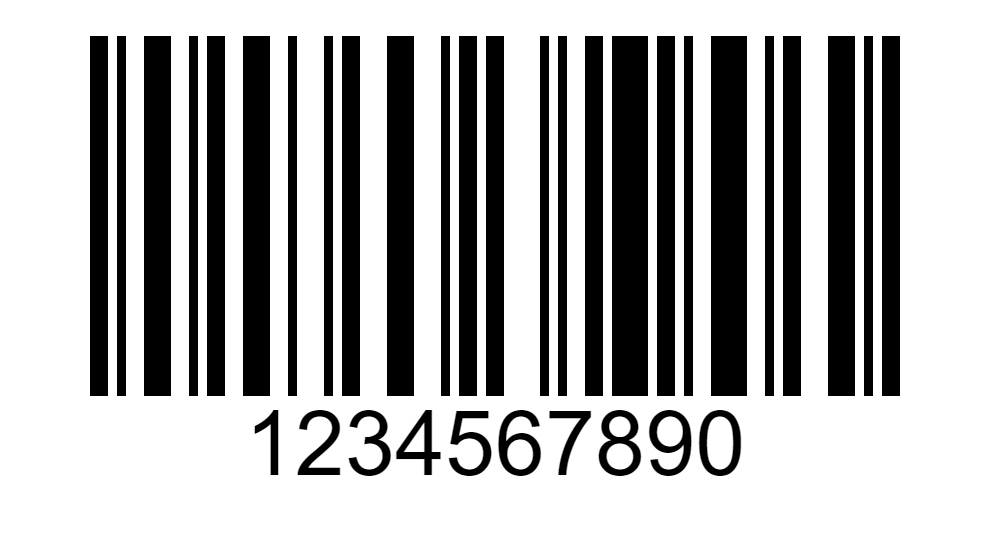Barcode recognition
Foreword
A barcode is a graphic identifier that expresses a set of information by arranging multiple black bars and spaces of varying widths according to certain coding rules. Common barcodes are parallel lines formed by black bars (referred to as bars) and white bars (referred to as spaces) with very different reflectivity. Barcodes can indicate a lot of information such as the country of production, manufacturer, product name, production date, book classification number, mail origin and destination, category, date, etc., and are therefore widely used in many fields such as commodity circulation, book management, postal management, and banking systems.

Experiment Purpose
Program to realize barcode recognition and print the recognized information through the serial port terminal.
Experimental Explanation
For CanMV K230, you can directly use find_barcodes() in MicroPython to obtain relevant information about the barcode in the image captured by the camera. This function supports all one-dimensional barcodes:
image.EAN2
image.EAN5
image.EAN8
image.UPCE
image.ISBN10
image.UPCA
image.EAN13
image.ISBN13
image.I25
image.DATABAR (RSS-14)
image.DATABAR_EXP (RSS-Expanded)
image.CODABAR image.CODE39
image.PDF417 image.CODE93
image.CODE128
The specific instructions are as follows:
class find_barcodes
Constructors
image.find_barcodes([roi])
Find all barcodes within the roi region and return a list of image.barcode objects.
Methods
The above function returns a list of image.barcode objects.
barcode.rect()
Returns a rectangle tuple (x, y, w, h) that represents the border of the barcode. You can get a single value by indexing [0-3].
barcode.payload()
Returns the barcode string information. You can get this value by indexing [4].
barcode.type()
Returns the barcode type.
For more usage, please read the official documentation::
https://www.kendryte.com/k230_canmv/main/zh/api/openmv/image.html#find-barcodes
As can be seen from the table above, using MicroPython programming we only need to simply call the find_barcodes() function and process the results, which is very convenient. The code writing process is shown in the figure below:
Codes
CanMV K230 + 3.5 inch mipi lcd
'''
Demo Name:Barcode recognition
Platform:01Studio CanMV K230
Tutorial:wiki.01studio.cc
'''
import time, math, os, gc
from media.sensor import * #Import the sensor module and use the camera API
from media.display import * #Import the display module and use display API
from media.media import * #Import the media module and use meida API
#Define barcode type
def barcode_name(code):
if(code.type() == image.EAN2):
return "EAN2"
if(code.type() == image.EAN5):
return "EAN5"
if(code.type() == image.EAN8):
return "EAN8"
if(code.type() == image.UPCE):
return "UPCE"
if(code.type() == image.ISBN10):
return "ISBN10"
if(code.type() == image.UPCA):
return "UPCA"
if(code.type() == image.EAN13):
return "EAN13"
if(code.type() == image.ISBN13):
return "ISBN13"
if(code.type() == image.I25):
return "I25"
if(code.type() == image.DATABAR):
return "DATABAR"
if(code.type() == image.DATABAR_EXP):
return "DATABAR_EXP"
if(code.type() == image.CODABAR):
return "CODABAR"
if(code.type() == image.CODE39):
return "CODE39"
if(code.type() == image.PDF417):
return "PDF417"
if(code.type() == image.CODE93):
return "CODE93"
if(code.type() == image.CODE128):
return "CODE128"
sensor = Sensor() #Constructing a camera object
sensor.reset() # reset the Camera
sensor.set_framesize(width=800, height=480) # Set the frame size to LCD resolution (800x480), channel 0
sensor.set_pixformat(Sensor.RGB565) # Set the output image format, channel 0
#Use 3.5-inch mipi screen and IDE buffer to display images at the same time, 800x480 resolution
Display.init(Display.ST7701, to_ide=True)
#Display.init(Display.VIRT, sensor.width(), sensor.height()) ##Use only the IDE buffer to display images
MediaManager.init() #Initialize the media resource manager
sensor.run() #Start the camera
clock = time.clock()
while True:
####################
## Write codes here
####################
clock.tick()
img = sensor.snapshot() # Take a picture
codes = img.find_barcodes() # Find all barcodes in an image
for code in codes:
#Draw a rectangle to represent the barcode
img.draw_rectangle(code.rect(),thickness=2)
#Print related information
print_args = (barcode_name(code), code.payload(), (180 * code.rotation()) / math.pi, code.quality())
print("Barcode %s, Payload \"%s\", rotation %f (degrees), quality %d" % print_args)
img.draw_string_advanced(0, 0, 30, code.payload(), color = (255, 255, 255)) #Image display barcode information
Display.show_image(img) #Display images
print(clock.fps()) #FPS
CanMV K230 mini + 2.4 inch mipi lcd
'''
实验名称:条形码识别
实验平台:01Studio CanMV K230 mini + 2.4寸mipi屏
说明:编程实现摄像头识别各类条形码
'''
import time, math, os, gc
from media.sensor import * #导入sensor模块,使用摄像头相关接口
from media.display import * #导入display模块,使用display相关接口
from media.media import * #导入media模块,使用meida相关接口
#定义条形码类型
def barcode_name(code):
if(code.type() == image.EAN2):
return "EAN2"
if(code.type() == image.EAN5):
return "EAN5"
if(code.type() == image.EAN8):
return "EAN8"
if(code.type() == image.UPCE):
return "UPCE"
if(code.type() == image.ISBN10):
return "ISBN10"
if(code.type() == image.UPCA):
return "UPCA"
if(code.type() == image.EAN13):
return "EAN13"
if(code.type() == image.ISBN13):
return "ISBN13"
if(code.type() == image.I25):
return "I25"
if(code.type() == image.DATABAR):
return "DATABAR"
if(code.type() == image.DATABAR_EXP):
return "DATABAR_EXP"
if(code.type() == image.CODABAR):
return "CODABAR"
if(code.type() == image.CODE39):
return "CODE39"
if(code.type() == image.PDF417):
return "PDF417"
if(code.type() == image.CODE93):
return "CODE93"
if(code.type() == image.CODE128):
return "CODE128"
sensor = Sensor(width=1280, height=960) #构建摄像头对象
sensor.reset() #复位和初始化摄像头
sensor.set_framesize(width=640, height=480) #设置帧大小为LCD分辨率,默认通道0
sensor.set_pixformat(Sensor.RGB565) #设置输出图像格式,默认通道0
Display.init(Display.ST7701, width=640, height=480, to_ide=True) #同时使用mipi屏和IDE缓冲区显示图像
#Display.init(Display.VIRT, sensor.width(), sensor.height()) #只使用IDE缓冲区显示图像
MediaManager.init() #初始化media资源管理器
sensor.run() #启动sensor
clock = time.clock()
while True:
clock.tick()
img = sensor.snapshot() #拍摄图片
codes = img.find_barcodes() #查找图像中所有条形码
for code in codes:
#对条码画矩形表示
img.draw_rectangle(code.rect(),thickness=2)
#打印相关信息
print_args = (barcode_name(code), code.payload(), (180 * code.rotation()) / math.pi, code.quality())
print("Barcode %s, Payload \"%s\", rotation %f (degrees), quality %d" % print_args)
img.draw_string_advanced(0, 0, 30, code.payload(), color = (255, 255, 255)) #图像显示条码信息
Display.show_image(img) #显示图片
print(clock.fps()) #打印帧率
Experimental Results
For better recognition, the barcode on the image needs to be relatively flat and not too small.
Run the program and open a barcode image. The camera faces the barcode. After successful recognition, you can see a box appear in the image and the barcode information is printed on the serial terminal.
Original image:

Identification results:

Detailed information of barcode printed by serial terminal:

Barcodes are widely used in daily life. With the experimental skills learned in this section, we can easily create a barcode scanner of our own.